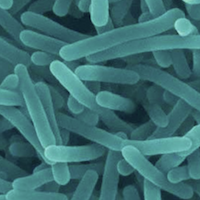Temperature fluctuations along food supply chain: A dynamic and stochastic predictive approach to establish the best temperature value in challenge tests for Listeria monocytogenes

Accepted: 21 January 2022
HTML: 5
All claims expressed in this article are solely those of the authors and do not necessarily represent those of their affiliated organizations, or those of the publisher, the editors and the reviewers. Any product that may be evaluated in this article or claim that may be made by its manufacturer is not guaranteed or endorsed by the publisher.
This study aims to evaluate the behaviour of Listeria monocytogenes under fluctuating temperature comparing the efficacy of deterministic and stochastic methods for its prediction. In the first part of the study, a strain of L. monocytogenes was maintained at two different fluctuating temperature regimes both from 2 to 8 C and regularly sampled for the quantitative determination. The first temperature regime lasted 204 hours with a fluctuation length of 12 hours whereas the second lasted 167 hours with a fluctuation length of 24 hours. A dynamic predictive model was implemented for the reproduction of the observed data. Model resolution has been carried out by using values of the recorded temperature as well as the value of the mean temperature, the kinetic mean temperature, the 75th and 95th percentile of the temperature. A stochastic resolution was also performed considering the mean temperature and Standard Deviation as stochastic variable. In the second part of the study, a temperature mean curve was constructed by monitoring temperature of 8 refrigerated conveyances, 10 display cabinet and 15 domestic refrigerators. This curve was used to obtain predictive scenarios for L. monocytogenes based on the above and also considering temperature regime suggested by the EURL Lm TECHNICAL GUIDANCE DOCUMENT on challenge tests and durability studies for assessing shelf-life of ready-to-eat foods related to Listeria monocytogenes (Version 4 of 1 July 2021). All predicted behaviours were compared to the observed ones through the Root Mean Squared Error. Firstly, dynamic predictive model as well as the stochastic one, provided the best level of reproducibility of the observed data. The kinetic mean temperature reproduced the observed data better than the mean temperature for the 12 hoursregime while for the 24 hours-regime was the opposite. The 75th and 95th percentile overestimated the observed growths. Secondary, predictions obtained with the mean temperature, kinetic temperature and stochastic approach well fitted the observed data. The 75th and 95th percentile of Temperature and the “Eurl LM” temperature regimes overestimated the observed prediction. Dynamic approach as well as the stochastic one allowed to obtain the lowest values of Root Mean Squared Error. The mean temperature and kinetic mean temperature appeared the most representative values in a deterministic “single-point” approach.
PAGEPress has chosen to apply the Creative Commons Attribution NonCommercial 4.0 International License (CC BY-NC 4.0) to all manuscripts to be published.


 https://doi.org/10.4081/ijfs.2022.9981
https://doi.org/10.4081/ijfs.2022.9981



